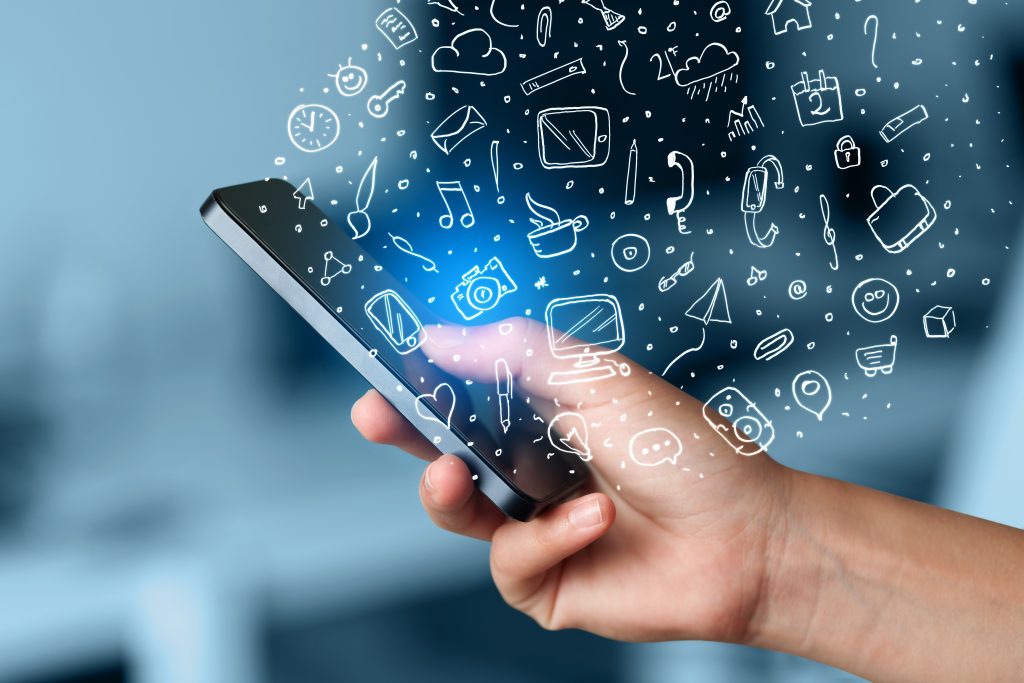As a 20-something, social media seems like an extension of my life. It’s how I stay connected with friends near and far, and how I organise shopping trips, dinners and coffee catch-ups. For many seniors, however, staying connected digitally can seem complicated and confusing.
As loneliness and depression continue to be significant issues among people over 65, learning additional ways to stay connected can not only bring positive social outcomes, but also assist with access to many health services that support help-seeking, treatment, and care.
Older people were the most isolated group during the period of severe pandemic restrictions in 2020, according to a report from the Australian Institute of Family Studies.1
As people across Australia embraced such tools as Zoom and SMS to stay connected, older people struggled with video calls and online technologies.
“Six in 10 Australians stayed connected using talking and texting during the pandemic [of the first half of 2020], and a quarter of Australians embraced other unique activities – like virtually sharing meals, playing games or exercising,” AIFS Director Anne Hollonds said in a July 2020 media release referring to the study.
“However, a lot of older respondents shared that they were struggling with video calls and new online technologies: 30 per cent of people over 70 used handwritten letters to stay in touch, and many older Australians still depended on face-to-face visits for contact and support.”1
With communication and healthcare services more frequently making the switch to online, it’s important that communities are equipped with the digital literacy skills to navigate the online environment, and that seniors are included.
The digital divide
The 2021 Australian Digital Inclusion Index found “a quarter of Australians” were “digitally excluded”.2
This proportion of the population “can’t affordably access or confidently use technology”, says Jess Wilson, CEO of Good Things Foundation Australia, a charity seeking to bring connectivity to more people.
“As nearly every aspect of life goes online, from healthcare and government services to socialising, it’s critical that we help people get online and learn digital skills so that no one is left behind,” she said.
“Technology is vital for connecting people to each other and to services like healthcare. While everyone deserves to have this opportunity, right now there’s still a long way to go towards making this a reality. That’s why helping people get connected online is so important to Good Things Foundation Australia, so that everyone can benefit from digital.”
The Foundation has implemented programs aimed at addressing the “digital divide” and increasing digital literacy, including:
- ‘Be Connected’.
- ‘Get Online Week’.
- ‘Your Health in Your Hands’.
Be Connected. In partnership with the federal Department of Social Services, Be Connected is a national initiative delivering online learning resources and connecting people with community partners, enabling them to build online skills.3
“Over one million people over the age of 50 have participated in Be Connected so far,” Ms Wilson said. “It’s amazing to see how much learning digital skills changes people’s lives.”
Get Online Week. Communities can become involved in Get Online Week by encouraging people to ‘Try one thing’ online and improve their digital skills. Get Online Week features community events that have been organised to encourage people to become active online.
“With Get Online Week, each year our network of community partners holds supportive events that reach right into the heart of their communities, bringing people together to get excited about learning digital skills,” Ms Wilson said.
Your Health in Your Hands. Until September, Good Things Foundation is running free digital health literacy webinars and support sessions in association with the Australian Digital Health Agency. Sessions cover such areas as using telehealth, accessing My Health Record, and finding reliable health information online.
The sessions are free and informative, encouraging Australians of any age or skill level to become more confident using technology to manage their health and well-being.
“Digital health services are often more affordable and convenient for people in regional and remote communities who don’t have access to local healthcare options,” Ms Wilson said.
“Your Health in Your Hands is a new program supporting Australians with essential digital skills so they can access the health services they need.”
Learn more
- Be Connected: beconnected.esafety.gov.au/
- Get Online Week: aus.getonlineweek.com/
- Your Health in your hands: goodthingsfoundation.org.au/what-we-do/our-projects/your-health-in-your-hands/
References:
- Australian Institute of Family Studies. ‘Life during Covid: Staying connected when we’re apart’. July 2020. gov.au/sites/default/files/media_release-aifs_life_during_covid19-staying_connected_0.pdf [accessed 1/8/22].
- ARC Centre of Excellence for Automated Decision-Making and Society. ‘2021 Australian Digital Inclusion Index’. 2021. org.au/download-reports/ [accessed 21/7/22].
- Australian Government. ‘Be Connected’. 2022. esafety.gov.au/index.php?redirect=0# [Accessed 21/7/22].
This feature was originally published in the August issue of Retail Pharmacy Assistants e-magazine.







